Nerite Snails with Bettas: A Comprehensive Aquarium Guide

Nerite snails make excellent tank companions for betta fish due to their ability to live peacefully together while providing beneficial roles in maintaining the aquatic environment. In this article, Nerite Snails with Bettas, you will learn about the advantages of introducing nerite snails to your betta tank and the considerations you must remember to ensure a successful cohabitation.

One of the main reasons to add nerite snails to your betta tank is their exceptional algae-eating capabilities, helping to keep the tank clean and healthy for your betta fish. The compatibility of these species is another crucial factor, as nerite snails are small, non-aggressive, and generally unobtrusive – traits that work well with bettas’ personalities.
However, before introducing nerite snails to your betta tank, creating the right living conditions for both species is essential. You must consider each species’ tank size, water parameters, temperature requirements, and food sources to ensure their optimal well-being and thriving companionship.
Contents
Table of Contents
Understanding Nerite Snails and Bettas
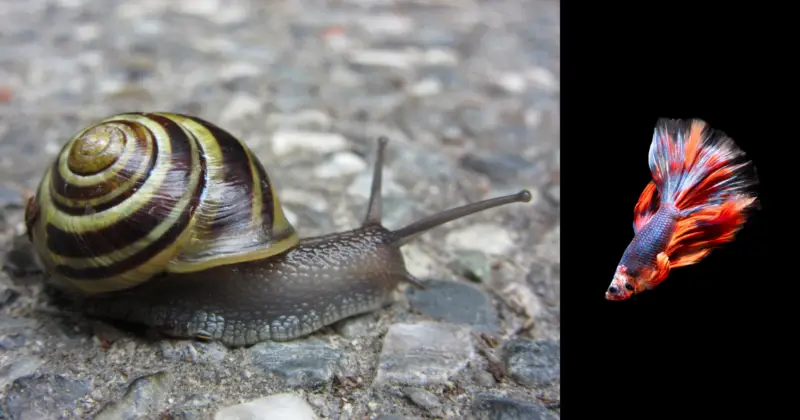
When considering adding tank mates to your betta fish’s environment, choosing compatible species is essential. Nerite snails are popular due to their peaceful nature, hardiness, and algae-eating abilities. In this section, we’ll provide you with a brief overview of nerite snails and betta fish and discuss the compatibility of these two freshwater species.
Nerite Snails: These small, colorful snails are known for their voracious appetite for algae, making them an excellent addition to your aquarium for natural algae control. Nerite snails typically thrive in water with a pH of 7.5-8.5 and a hardness level of 5-12, so ensuring that your betta fish’s habitat is compatible with these parameters is crucial. You can find more information about nerite snail care here.
Betta Fish: A bright and feisty freshwater species, betta fish are known for their vibrant colors and flowing fins. While they have a reputation for being aggressive, this primarily relates to their interactions with other bettas. With the proper tank setup and compatible tank mates, bettas can coexist with other species, such as nerite snails. Just ensure that your betta’s habitat meets its specific requirements, including water temperature, filtration, and hiding spots.
Now that you understand nerite snails and bettas let’s address their compatibility in an aquarium setting. Both snails and bettas can coexist in similar water parameters, with snails being hardy and peaceful creatures. However, bettas can be territorial and aggressive towards anything they perceive as invading their territory.
To minimize conflicts, provide an adequately sized tank with hiding spots and decorations that allow for a comfortable living space. You can find more information regarding bettas and snail compatibility here.
When setting up a tank for nerite snails and betta fish, always monitor their interactions and ensure the habitat provides ample space and proper conditions for both species. By understanding their requirements and addressing potential compatibility issues, you’ll be able to enjoy a beautiful and harmonious freshwater aquarium with nerite snails and bettas thriving together.
Compatibility of Nerite Snails and Bettas
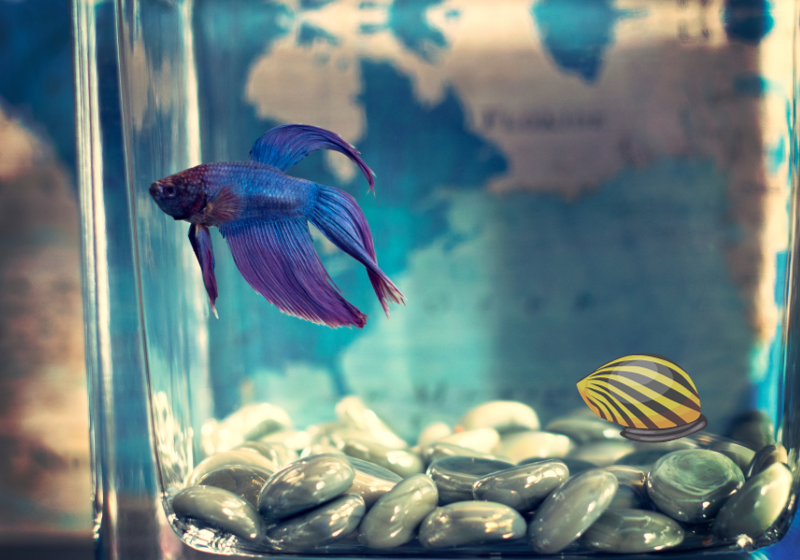
In the world of aquatic pets, finding compatible tank mates is crucial for a healthy and harmonious environment. If you are considering adding nerite snails to your betta fish tank, it’s essential to understand their compatibility and the factors that can influence their peaceful coexistence.
Bettas, also known as Siamese fighting fish, are known for their aggressive and territorial nature. However, they can coexist peacefully with certain species, such as nerite snails. Nerite snails are ideal tank mates for bettas because of their small eye stalks and minimal body protrusion from the shell, reducing the chances of your betta perceiving them as a threat.
The key to maintaining compatibility between nerite snails and bettas is providing them with an adequately sized tank, preferably around 5 gallons or larger. This allows for sufficient space for both species to have their territories and reduces the chances of bettas getting too territorial or aggressive towards the snails.
Another essential factor to consider is mimicking the natural habitat of both bettas and nerite snails, such as providing hiding spots like plants and decorations. This allows them to feel secure and reduces the chances of aggression or stress.
As both species have different water parameters and temperature preferences, it is also crucial to maintain a consistent environment suitable for both. Nerite snails thrive in slightly cooler water temperatures ranging from 72°F to 78°F, while bettas prefer slightly warmer temperatures, between 76°F and 82°F. Aim for an optimal balance by maintaining your water temperature around 76°F to 78°F.
Regarding diet, nerite snails are vegetarian and feed primarily on algae and other plant matter. Since bettas are carnivores, they will not compete for food sources. Providing a varied diet to both your betta fish and nerite snails will undoubtedly contribute to their well-being.
To summarize, compatibility between bettas and nerite snails can be successfully achieved by providing an adequate tank size, mimicking their natural habitat, maintaining suitable water parameters, and understanding their dietary needs. These interesting and beautiful aquatic creatures can coexist peacefully in your fish tank with proper care.
Ideal Conditions for Coexistence
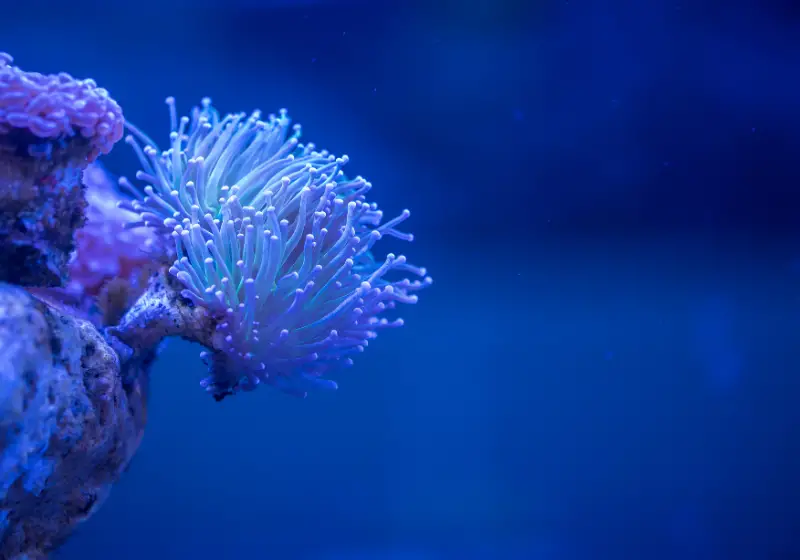
When planning to keep Nerite snails with Bettas, creating an environment suitable for both species is essential. Ensuring optimal water parameters, temperature, and habitat is crucial for coexistence and well-being.
For a thriving betta tank, pay close attention to the water parameters. A pH between 6.5 and 8 is ideal for Bettas and Nerite snails. Maintaining ammonia, nitrite, and nitrate levels within safe ranges is also vital. Regular testing can help you monitor the water quality, while frequent water changes and proper filtration systems can prevent harmful build-ups.
Temperature is another important factor for the coexistence of Bettas and Nerite snails. Bettas prefer a water temperature between 23.89°C and 26.67°C (75°F – 80°F), while Nerite snails can thrive in a slightly broader range of 20°C – 28°C (68°F – 82.4°F). Ensure the temperature is stable by using an aquarium heater and monitoring it with an accurate thermometer.
Creating a suitable habitat in your Betta tank goes beyond just water parameters and temperature. Provide plenty of hiding spaces, such as caves or densely planted areas, to help Bettas feel secure. An adequately structured environment reduces the likelihood of aggression toward tank mates, such as Nerite snails. Remember, Nerite snails feed on algae, so having some natural décor, such as rocks and driftwood, can provide extra food sources.
Lastly, ensure that each occupant has sufficient space. A minimum tank size of five gallons is recommended when housing Bettas and Nerite snails together. Of course, as your tank size increases, you can accommodate more snails and fish, but always be mindful of overstocking and respect each species’ requirements.
By considering water parameters, temperature, habitat, and tank size, you can create an ideal environment for the coexistence of Bettas and Nerite snails. Remember that individual personalities can differ; some Bettas may be more tolerant towards tank mates, while others may exhibit aggression. Observing your tank inhabitants and adjusting the setup as needed will help ensure a successful and harmonious betta tank.
Feeding Habits and Diet

Nerite snails and bettas may live together in the same tank, and one of the appealing factors of nerite snails is their ability to consume and clean up algae. As a nerite snail owner, you will find that their algae appetite helps keep your tank looking clean and tidy.
In addition to algae, nerite snails also enjoy munching on biofilm and slime molds that grow on driftwood and aquarium décor1. Since they consume various types of algae, providing them with a balanced diet is essential. To help supplement their diet when algae are scarce, you may offer your nerite snails algae wafers every few days. Algae wafers ensure that they receive essential vitamins and minerals2.
However, be careful not to overdo it with algae wafers, which may affect your tank’s water quality. Providing a variety of blanched vegetables, live food, and occasional treats is an excellent way to ensure that your nerite snails remain healthy2. Some snails may even help control uneaten fish food and decaying plant matter, thus contributing to your tank’s overall water quality3.
In summary, nerite snails possess a strong appetite for algae and benefit from a balanced diet that includes algae wafers, vegetables, live food, and occasional treats. Taking care of their dietary needs will ensure that both your snails and bettas coexist peacefully while keeping your aquarium clean and well-maintained.
Reproduction and Breeding
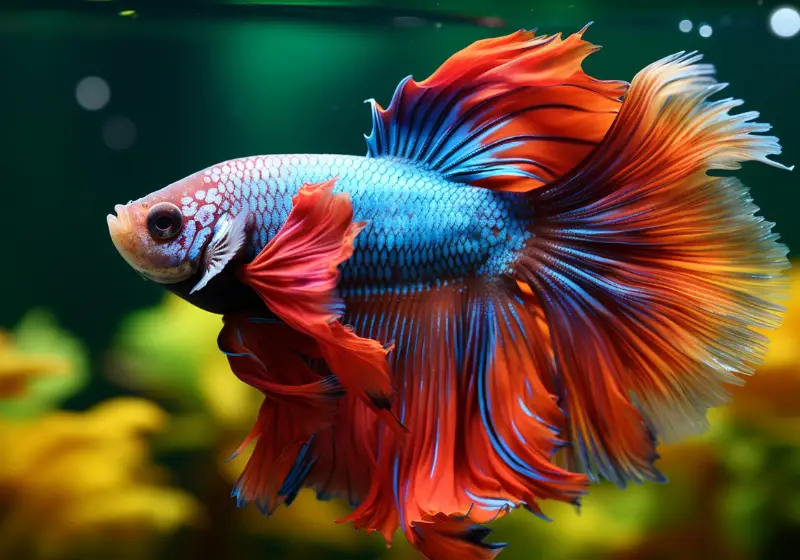
Nerite snails reproduce differently from other aquatic snails, making their breeding process more intricate. It takes both a male and a female snail to reproduce, unlike some species that reproduce asexually. You should be aware that some factors can affect the breeding process, such as water parameters and the presence of betta fish.
Firstly, females lay eggs that are small, white, and often noticeable on aquarium decorations or surfaces. Although nerite snails can lay these eggs in freshwater, they won’t hatch until they are in brackish water. This means that you must create an environment with a specific salinity to encourage the hatching of nerite snail eggs. Please note that while the eggs won’t hatch in freshwater conditions, it’s not uncommon for nerite snails to continue laying them.
Regarding bettas and nerite snails, they can coexist in the same aquarium. Snails do not threaten bettas, and they both thrive in similar water parameters. However, the betta fish might show slight aggression towards the eggs or even snails themselves, though this is generally not a severe issue.
To increase your chances of successful breeding, try mimicking the snails’ natural habitat and providing adequate tank space. Ensure you maintain optimal water parameters and temperature suited for both bettas and nerite snails. Equipment like heaters and filters is crucial to maintaining a healthy and balanced environment for them to reproduce.
In summary, when breeding nerite snails with bettas, be mindful of the water parameters, the snails’ genders, and the conditions for laying and hatching eggs. With a confident, knowledgeable, and neutral approach, you can create a suitable environment that encourages successful reproduction between these fascinating creatures.
Handling and Care

Caring for nerite snails with bettas can be a rewarding experience if you pay attention to their specific needs. First, providing a suitable substrate, such as sand or smooth gravel, is essential to protect their delicate bodies. Avoid sharp-edged substrates, as they may cause injury to the snails.
In terms of water quality, maintain a clean environment by performing regular water changes. A weekly 25% water change is a good rule of thumb. Keep the water temperature consistent, ideally between 72-78°F, and ensure that the pH levels are between 7.0 and 8.5 1(https://snailmight.com/nerite-snails-with-betta/). Monitor the water parameters closely to prevent sudden fluctuations that can stress both your snails and bettas.
It’s also crucial to have an aquarium lid in place. Nerite snails are skilled climbers and can easily escape the tank if given the opportunity. A good aquarium lid prevents your snails from escaping and meeting an unfortunate end.
Calcium is an essential nutrient for nerite snails, as it helps maintain a healthy shell. Adding calcium supplements, such as cuttlebones or calcium blocks, to the tank benefits the snails and provides the necessary minerals for betta fish 2(https://bettafishbay.com/tank-mates/snails/nerite/). Another source of calcium can be introduced through their diet by providing high-calcium foods, like blanched spinach or specialized snail food.
By carefully considering the factors mentioned above and providing the appropriate care, your nerite snails and bettas can thrive together, creating a vibrant aquatic environment for everyone to enjoy.
The Role of Plants in The Aquarium
When setting up your betta tank, incorporating plants is highly beneficial for both your fish and nerite snails. Live plants look appealing and play a vital role in maintaining the health of your aquarium.
Aquarium plants provide a natural environment, comforting your betta fish and nerite snails. These plants, such as the Java Fern, serve as a refuge for your fish and snails, offering them shelter and aiding in stress reduction.
Live plants help absorb harmful chemicals such as ammonia and nitrates, improving the water quality. They also play a role in the nitrogen cycle, assisting in water filtration and oxygen production, which is essential for the overall well-being of your tank inhabitants.
Including plant matter in your aquarium can serve as a food source for nerite snails. These snails are natural algae-eaters and will consume the algae growing on your plants, keeping the tank environment clean and healthy.
Proper lighting and nutrient levels should be considered to ensure the growth and maintenance of your aquarium plants. Some plants may require supplementation with fertilizers to ensure they receive adequate nutrients.
Incorporating plants such as Java Fern into your aquarium plays a significant role in maintaining a healthy environment for your betta fish and nerite snails. Plants enrich the overall quality of your tank by providing shelter, improving water quality, and serving as a natural food source for your snails.
Do Aquarium Snails Eat Your Live Plants – The Answer
Other Snail Species Considerations
When planning to add different snail species in your betta tank, it is essential to consider their compatibility with bettas and their specific requirements. This will ensure a peaceful and healthy environment for all the inhabitants in your tank.
Mystery snails are another common option for betta tanks. Large, colorful snails come in various colors like gold, black, and brown. As they grow much bigger than nerite snails, ensure you have enough room for these creatures to move around.
Assassin snails are an interesting addition, primarily as they help control populations of unwanted snail species like pest snails. Remember that they are carnivorous and may prey on other snail species in your tank.
On the other hand, Malaysian trumpet snails (MTS) are useful for stirring up the sand substrate, preventing gas build-up, and keeping the tank clean. These snails reproduce quickly, so you may need to take measures to control their population.
Ramshorn snails can be a colorful addition to your aquarium and are known for consuming algae. However, they multiply rapidly and can overrun the tank if left unchecked.
Apple snails are typically much larger than other species, with some reaching the size of a softball. You need to ensure your tank has enough space and remember that they consume large amounts of aquatic plants.
Japanese trapdoor snails and rabbit snails can coexist with bettas, but they are not as common and have their specific care requirements. Always research the snail species you are interested in to provide the best possible care and ensure compatibility.
Avoid adding pond snails and other types of pest snails to your betta tank, as they can multiply out of control and impact the water quality, leading to an unhealthy environment.
Always keep an eye on snail populations and adjust tank conditions to maintain a balanced and healthy aquarium. Feel free to explore various combinations of snail species for your betta tank and choose the ones that best fit your requirements and preferences.
Benefits and Risks of Keeping Snails With Bettas

When considering adding snails to your betta fish tank, it’s important to understand the benefits and risks of this decision. In this section, we’ll discuss the impact that snails can have on your tank’s ecosystem and the potential challenges that may arise.
One of the main benefits of keeping snails with bettas is their ability to clean up waste, uneaten food, and organic matter in the tank. Snails are natural scavengers and play a crucial role in breaking down debris and maintaining a cleaner environment for your fish. This helps reduce the buildup of ammonia, nitrite, and nitrate, which are toxic compounds that can harm your betta fish’s health.
Additionally, snails can enrich the ecosystem of your betta’s tank, bringing biodiversity and balance to the underwater world. Some snails, like nerite snails, are even known to consume algae, helping to maintain cleaner tank walls and a healthier aquatic environment.
However, there are also potential risks to consider when introducing snails to a betta’s tank. One major concern is the increased bio load of the aquarium, as snails contribute to the overall waste produced within the tank. If the bio load becomes too high, it can lead to water quality issues and increased stress on your betta fish.
Another potential issue is the compatibility between your betta fish and the snails. Not all bettas tolerate snails, and some may even exhibit aggressive behavior. As mentioned in the Betta Fish Forum, some bettas are known to attack snails by eating their eyes and antenna or smashing them against the tank walls. Therefore, it is important to observe your betta fish and ensure it’s compatible with its new tank mates.
In conclusion, while there are benefits to keeping snails with bettas, such as improved waste management and an enriched ecosystem, it’s crucial to weigh the potential risks, like increased bio load and compatibility issues. By carefully considering these factors, you can make an informed decision about adding snails to your betta fish tank.
Avoiding Common Issues

When keeping nerite snails with bettas, it’s essential to be aware of potential issues and take steps to avoid them. By following these tips, you can ensure a harmonious environment for both your snails and betta fish.
Preventing Escaping
Nerite snails are known for their ability to climb, and they may try to escape from your tank. To avoid this, ensure you have a secure tank lid with no gaps for the snail to slip through. Also, keep the water level about an inch below the top of the tank to provide a barrier that snails cannot cross.
Avoid Overpopulation
While nerite snails do not breed in freshwater, bettas can produce many offspring if their habitat is conducive. To avoid overpopulation, ensure your tank has adequate space and that any potential breeding is carefully monitored. Suitable tank size is at least 2.5 gallons for a betta and a single snail.
Preventing Pests
Nerite snails can sometimes carry pests like parasites or algae. To reduce the risk of transmitting these to your betta, quarantine new snails for a week or two before introducing them into your main tank. During quarantine, observe the snails’ behavior and examine them for any signs of unwanted pests.
Maintaining Water Parameters
Ensuring proper water parameters is crucial for the health of both bettas and nerite snails. Ensure your tank’s temperature is between 75-81°F and maintain a pH of 7.0-8.0. Regularly check the water quality and perform water changes as needed to maintain stable conditions.
By following these guidelines, you can address the common issues when keeping nerite snails with bettas and enjoy a thriving tank.
Frequently Asked Questions: Nerite Snails with Bettas

Can nerite snails coexist with bettas in a 3-gallon tank?
Yes, nerite snails can coexist with bettas in a 3-gallon tank. Both the snails and bettas have similar water requirements and can live peacefully together. Ensure you properly maintain the water quality and keep the required water parameters for a harmonious environment.
What type of snail is best for a 5-gallon betta tank?
For a 5-gallon betta tank, nerite snails are the best choice due to their compatibility with bettas and their small size. They are hardy animals, making them suitable tank mates for bettas. Other snail species, such as mystery snails, can also be considered, but nerite snails are often preferred because they do not reproduce rapidly in freshwater tanks.
How many nerite snails can be placed in a 10-gallon tank with a betta fish?
In a 10-gallon tank with a betta fish, you can comfortably place 2-3 nerite snails. Overpopulating the tank can lead to issues with water quality and increased stress for the betta. It is essential to maintain the water parameters and ensure there is enough space for all the tank inhabitants.
What do nerite snails eat in a betta tank?
Nerite snails primarily feed on algae present in the betta tank. They help control algae growth, keeping the tank clean. Additionally, they can eat leftover fish food, decaying plant matter, or supplemented food like algae wafers or blanched vegetables, such as cucumber or spinach.
How to introduce nerite snails to a betta tank?
Before introducing nerite snails to your betta tank, acclimatize them to the water by placing them in a container with some of their original water and gradually adding water from the betta tank over 15-30 minutes. Once acclimatized, gently place the snail into the betta tank and monitor the interactions between the snail and the betta. In most cases, the two should have minimal to no issues.
What are the care requirements for nerite snails living with bettas?
Taking care of nerite snails in a betta tank involves maintaining water parameters, such as temperature, pH, and ammonia/nitrite/nitrate levels. The ideal temperature for nerite snails and bettas is between 76-82°F (24-28°C), with a pH between 7.0-8.0.
Monitor ammonia, nitrite, and nitrate levels frequently and maintain a clean tank by performing regular water changes and gravel vacuuming. Feed the nerite snails algae wafers or blanched vegetables if there is insufficient algae growth in the tank.


![Do Snails Have A Foot? [Full Guide]](https://allourcreatures.com/wp-content/uploads/2021/11/snail-foot-768x577.jpg)


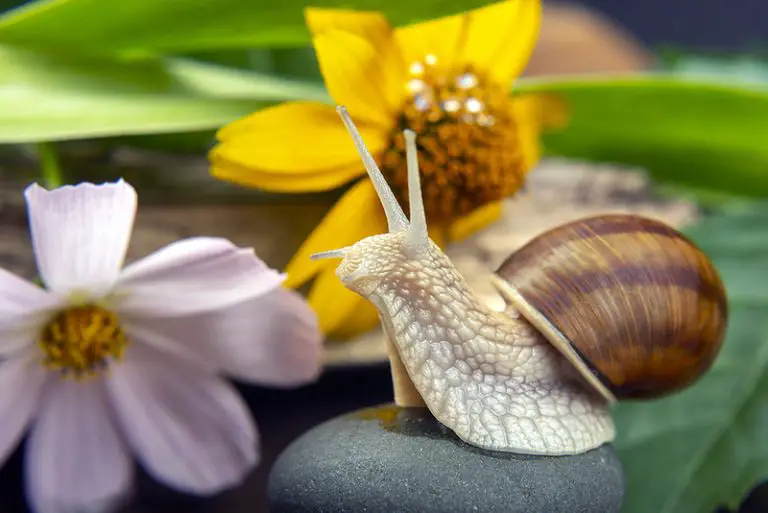
![What Do Apple Snails Eat? [Full Guide]](https://allourcreatures.com/wp-content/uploads/2021/10/what-do-apple-snails-eat-768x512.jpg)